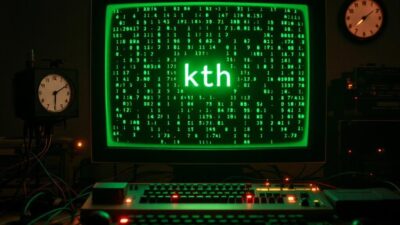The O(n) Club: Longest Common Subsequence – Why Your Files and DNA Both Need Therapy
⚡ TL;DR
LCS: finding the longest sequence in two strings—even if you skip a ton. Brute force? Trust me, your CPU will quit first. DP actually finishes the job.
Quick Java taste:// Brute force: the infinite procrastination method int lcsBrute(String a, String b, int i, int j) { if (i == a.length() || j == b.length()) return 0; if (a.charAt(i) == b.charAt(j)) return 1 + lcsBrute(a, b, i+1, j+1); return Math.max(lcsBrute(a, b, i+1, j), lcsBrute(a, b, i, j+1)); }
🧠 How Devs Usually Mess This Up
Let me guess—you mix up substrings (must be stuck together) and subsequences (skip like Netflix intros, as long as the order’s right). Or you pull out recursion, which combusts for strings longer than your lunch break. And who hasn’t lost an hour to forgetting that glorious extra row and column in their DP table?
🔍 What’s Actually Going On
This isn’t just another mindless DP grind! LCS is everywhere: it makes git diff light up your PR, it helps your spell checker sort out “teh” vs. “the,” and yes, some biologist is using it to align DNA right now.
Imagine two chefs with wild kitchen habits—one adds, skips, or burns steps, but the longest matching recipe (in order, but not consecutive) is LCS. Dynamic Programming means we don’t have to re-cook the same sub-recipes a billion times; just memoize each tasty sub-result, compare, and relax.
🛠️ PseudoCode
- Initialize: Whip up a DP table
dp[n+1][m+1]filled with zeros, because Java arrays love index 0 and so do off-by-one bugs. - Fill Table:
- If
A.charAt(i-1) == B.charAt(j-1), dodp[i][j] = 1 + dp[i-1][j-1](hurrah, a match!). - Otherwise, take
max(dp[i-1][j], dp[i][j-1])—keep the best streak so far.
- If
- Result:
dp[n][m]holds your answer. That’s your LCS length. - Bonus: Backtracking: Want the whole sequence? Trace back like a dramatic cooking show judge—from
dp[n][m]to 0, following the arrows (or max-ups/lefts).
💻 The Code
// No recursion, no drama. Pure algorithmic carbs.
public int longestCommonSubsequence(String A, String B) {
int n = A.length(), m = B.length();
int[][] dp = new int[n+1][m+1];
for (int i = 1; i <= n; i++) {
for (int j = 1; j <= m; j++) {
if (A.charAt(i-1) == B.charAt(j-1)) {
dp[i][j] = 1 + dp[i-1][j-1];
} else {
dp[i][j] = Math.max(dp[i-1][j], dp[i][j-1]);
}
}
}
return dp[n][m];
}
// Backtrack for the actual LCS (so you can brag about more than just the number)
public String buildLCS(String A, String B) {
int n = A.length(), m = B.length();
int[][] dp = new int[n+1][m+1];
for (int i = 1; i <= n; i++) {
for (int j = 1; j <= m; j++) {
if (A.charAt(i-1) == B.charAt(j-1)) {
dp[i][j] = 1 + dp[i-1][j-1];
} else {
dp[i][j] = Math.max(dp[i-1][j], dp[i][j-1]);
}
}
}
StringBuilder lcs = new StringBuilder();
int i = n, j = m;
while (i > 0 && j > 0) {
if (A.charAt(i-1) == B.charAt(j-1)) {
lcs.append(A.charAt(i-1));
i--;
j--;
} else if (dp[i-1][j] > dp[i][j-1]) {
i--;
} else {
j--;
}
}
return lcs.reverse().toString();
}
⚠️ Pitfalls, Traps & Runtime Smacks
- Subsequence vs Substring: One skips, one doesn’t. Get this wrong and you get test-case coal for Christmas.
- DP Space Meltdown: Huge strings? Don’t keep the whole grid—just use two rows for space-hipster cred.
- Null and Empty Strings: Handle these like you handle caffeine: with constant vigilance.
- Complexity: Time: O(n × m). Space: O(n × m) (or O(min(n, m)) with row optimization). If your strings are DNA-sized, maybe go outside for a walk.
🧠 Interviewer Brain-Tattoo
“LCS is about finding common ground by skipping drama along the way—much like successful project meetings.”






































































































































